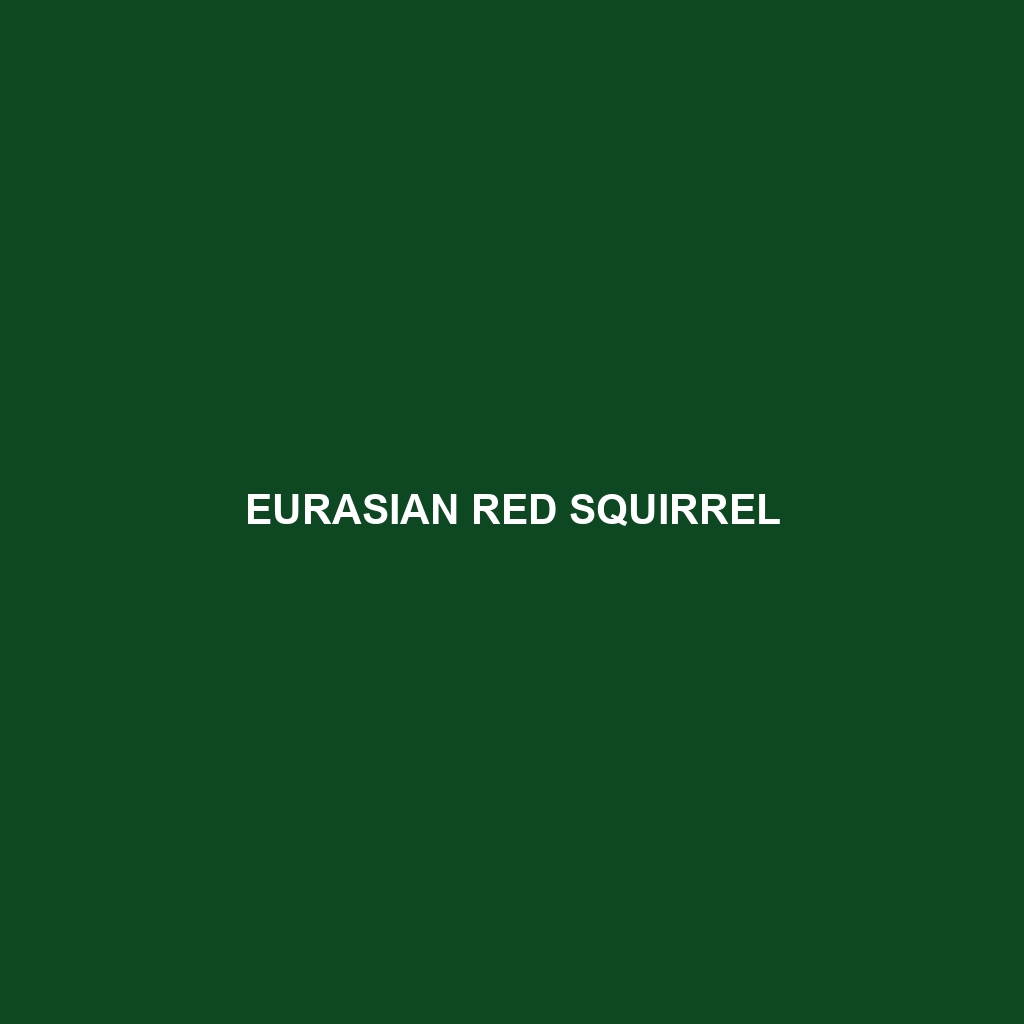Common Name: Eurasian Red Squirrel
Scientific Name: Sciurus vulgaris
Habitat:
The Eurasian Red Squirrel is primarily found across a wide geographical range, including forests and woodlands in Europe and parts of Asia. This species thrives in coniferous, deciduous, and mixed forests, favoring areas with abundant tree cover and food resources. Regions such as the UK, Scandinavia, and parts of Russia are notable habitats for these agile rodents.
Physical Characteristics:
The Eurasian Red Squirrel varies in size, typically weighing between 200 to 400 grams and measuring around 20 to 25 centimeters in body length, with an additional 18 to 25 centimeters of tail. Their fur is usually reddish-brown, though some individuals may appear gray or black, especially in urban environments. Distinctive features include tufted ears, a bushy tail, and a slender body, making them easily recognizable among other species.
Behavior:
Eurasian Red Squirrels are known for their agile and playful nature. They are diurnal, actively foraging during the day. These squirrels are excellent climbers and often leap between branches with ease. They engage in behaviors such as caching food for winter, which involves burying nuts and seeds in various locations, showcasing their remarkable spatial memory.
Diet:
The diet of the Eurasian Red Squirrel primarily consists of nuts, seeds, fruits, and fungi. Their preference for acorns, hazelnuts, and pine seeds makes them key gardeners in forest ecosystems as they help in tree propagation through their feeding habits. They may also consume buds, bark, and occasionally insects during food shortages, reflecting their adaptability in foraging.
Reproduction:
Breeding season for the Eurasian Red Squirrel generally occurs in late winter to early spring and sometimes mid-summer. Females give birth to litters comprising 2 to 6 young after a gestation period of approximately 36 to 40 days. The young are born blind and helpless, staying in the nest for about 10 weeks before becoming independent. Maternal care is significant, as mothers are responsible for nurturing and teaching their offspring survival skills.
Conservation Status:
Currently, the Eurasian Red Squirrel is classified as Least Concern by the IUCN. However, specific populations face threats due to habitat destruction and competition from the introduced Eastern Gray Squirrel, leading to localized declines. Conservation efforts are essential to maintain healthy populations in certain regions.
Interesting Facts:
One fascinating aspect of the Eurasian Red Squirrel is their ability to change their fur color to adapt to seasonal conditions—richer red tones during summer and a more muted gray for winter camouflage. Additionally, they are known for their innovative problem-solving skills, often figuring out intricate ways to access bird feeders or hidden food.
Role in Ecosystem:
The Eurasian Red Squirrel plays a significant role in maintaining the health of forest ecosystems. By burying nuts and seeds, they contribute to forest regeneration, as forgotten caches can lead to new trees sprouting. Their presence also supports various predators, including birds of prey and terrestrial mammals, thus maintaining the balance of wildlife in their habitats.
